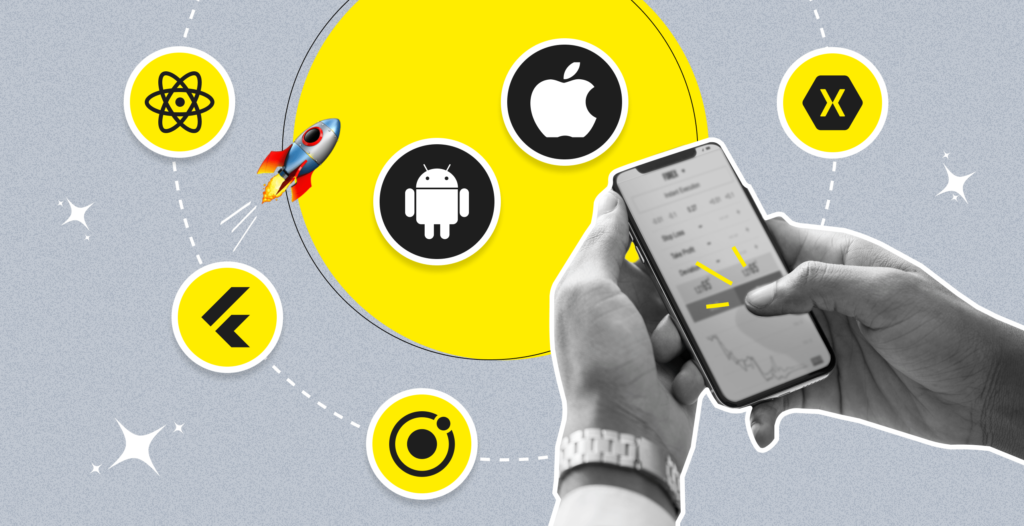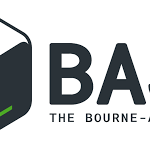Table of Contents
If the app economy today is not a luxury but a necessity, then business in our digital environment is destined to embrace technologies that are mobile-driven if they wish to remain competitive. Complete guidance through all the core aspects of developing a successful mobile app, from determining the market, choosing the proper technology stack, and creating an appealing user interface to utilizing the power of strong features with security and scale.
Understanding the Mobile App Landscape

The foundation of all good understanding in a mobile app landscape finally paves way to successful app development. This section takes a much closer look into the mobile app development landscape so that due attention is given to the main trends, market dynamics, and key statistics shaping the industry. Businesses can therefore keep an ear on the ground and take an appropriate plow in line with market appetite.
Mobile App Development: Learn about the different stages in the mobile app development process, beginning from ideation to deployment. Understand the approaches in dealing with the intricacies of every stage and how they finally reflect on the end product.
Mobile App Trends: Learn about current trends in the mobile app development area, such as the rise of AI-driven apps, the switch to 5G, and what personalization trends are in store for brands next. Keep ahead in knowing what shapes the industry.
Understand the mobile app market in terms of user demographics, the platform popularity, iOS vs. Android, and monetization. To learn what it will take to attract your targeted audience and how to problem-solve, get started on app development.
Mobile App Statistics: Tap into critical app-usage rates, download trends, and user-engagement metrics. Use this data to let you devise your app-development strategy, after which you’ll be able to set some real-world goals.
Selecting Your Mobile App’s Technologies
Ensuring the app performs well, scales well, and works successfully over time depends on the right technological stack. This section is hereby serving its purpose in providing an overview and guide on choosing the right development platforms, programming languages, and frameworks to help in achieving your app’s objectives and user needs.
Tech Stack in Mobile App Development: Know what a mobile app tech stack consists of; it includes frontend and backend technologies, databases, and cloud services. Each of the elements noted will be described in such a way that the student understands in what way they apply to the functioning and performance of an app.
Mobile App Development Platforms: Comparative analysis of basic mobile app development platforms—iOS and Android (cross-platform solutions should be considered). In the end, indicate which are the best core platform(s) based on your targeted audience and business needs.
Programming languages used for developing mobile apps: Taking a closer look into programming languages, for instance, Swift in iOS or Kotlin in Android; JavaScript in creating cross-platform apps, and others; know their strengths and weaknesses.
Frameworks for Mobile Applications: Comparison of popular mobile app frameworks, like React Native, Flutter, and Xamarin; learning how these frameworks accelerate development, reduce cost, and assure that your app will be agnostic-device-based in its approach.
Native vs. Cross-Platform Development: Comparing the Pros and Cons

This is probably the most important decision to make when you set foot on mobile app development: should you develop native mobile applications or go on with cross-platform? This also means developing the applications, discussing in detail the right trade-off between the native approach, applying its benefits and pitfalls, and a few particular use cases to guide the native and cross-platform development.
Native Mobile App Development: Learn about the advantages of native development—better performance, seamless integration with device capabilities, and a more polished user experience. Get to know what type of scenarios best suit native apps.
Cross-Platform Mobile App Development: Learn the advantages of a cross-platform approach to app development—shorter time-to-market, lower costs, and wide-reaching benefits. Learn the scenes within which it is most effective.
Hybrid Mobile Apps: This chapter focuses on hybrid mobile apps, which adopt native functionalities but are distinctly cross-platform. Draw an analogy to their potential in delivering a balanced solution to businesses o their limited resources in mind.
React Native, Flutter, Xamarin: Learn about the popular frameworks like React Native, Flutter, and Xamarin for cross-platform development. Then, compare their relative features, performance, and community support to pick up what is just right for you r project.
Designing a Seamless and User-Friendly Mobile User Experience

A good UX in mobile app design is super important for the success of the app. This part will be handling the basic principles of designing user interfaces in mobile applications, and provide practical advice on how best to develop an intuitively navigable user interface that will optimally support user interaction with the application.
Mobile App UI/UX Design: Learn the basic principles of creating a mobile application’s user interface, which include the power of simplicity, consistency, and responsiveness in the design. Learn how to design for an interface where good looks and user-friendliness go hand in hand.
Designing a Mobile App Best Practices: Learn about clear visual hierarchy, optimized touch, and accessibility through designing a mobile app.
Navigation in a mobile app—with intuitive ways, hence—forms one important aspect of your UX design. The art of creating navigation flows guides the user through the application with fewer obstacles, reducing friction and attaining overall ease of interaction.
Mobile App Gestures: Study how touch gestures contribute to a mobile application’s design. Find out how to make your user’s experience engaging and interactive.
Integrate Powerful Features and Functionalities
Now, if it’s a crowded market, as in the first point, there are already multiple apps like yours, so features and functionalities have to come up with some real user-specific solutions. This section covers how to build in basic features, extend functionalities using APIs to include additional capabilities, and use SDKs efficiently to reduce development resources.
Mobile App Features: The core features that can make your users benefit from your application are push notifications, in-app purchases, and social media integration. Learn to powerfully understand how to prioritize features against user needs and business goals.
Mobile App Integrations: Learn what it takes to have an app integrated with other services or platforms—whether a payment gateway, a CRM system, or a third-party API. Learn how to derive a connected ecosystem that will further enhance the functional capabilities of your app.
Mobile App APIs: Learn the why and how APIs play a major part in mobile app development, allowing multiple software features to communicate with each other. Discover how you can choose and install APIs that expand the capability reach of your app.
SDKs: The way SDKs ease dev. work and also make for faster creation will be explained to you. A look at some common SDKs make your life easier by shortcutting the most common app features, prebuilt for easy integration.
Supporting Security and Scalability

The long-term success of the mobile app is based on security and scalability. The techniques of building a secure, scalable app that will support ever-increasing user demands at the same or increasingly better performance levels while protecting user data will be explained in this chapter.
Mobile App Security: One will be taken through the best practices to ensure protection for a mobile application through data encryption, secure authentication, and protection against some of the common vulnerabilities. Learn why it is important to protect user data and to establish and maintain the trust of users.
Mobile App Scalability: You will learn about different techniques for fitting your apps into escalating traffic and usage. Some of these will be load balancing, cloud-based infrastructure, and optimization of performance. Learn how to future-proof your app for growth.
Mobile App Infrastructure: How infrastructure supports your mobile app with the help of servers, databases, and network components. Learn how to build a strong infrastructure that will hold high demand, assure uptime, and make your users happy.
Mobile App Hosting: Information on various mobile app hosting solutions. You will go through factors like performance, reliability, and cost to make the right choice for a hosting solution. To enable an excellent flow and user experience on your app, learn how to select the right hosting for your app.
Conclusion: Unleash the Full Potential of Your Mobile App
To maximize the impact of your mobile app, it’s essential to follow best practices at every stage of development. By focusing on the right technological stack, design principles, features, and security measures, you can unleash the full potential of your mobile app and drive long-term success for your business.
Ro Endeavors continues to stand as the best mobile app developers in India, with a growing portfolio of international clients who trust us to deliver exceptional results. Our commitment to excellence, innovation, and client satisfaction sets us apart, ensuring that your mobile app will be a powerful tool for success in the global market.



